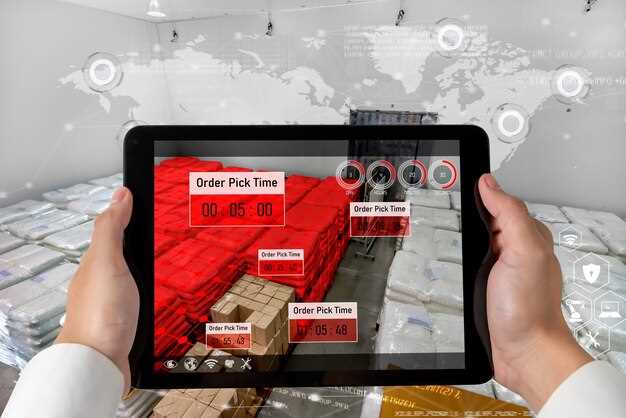
Act now: build a collaborative network of suppliers and carriers and deploy a unified data backbone to cut cycle times by up to 15% and handle record volumes of a million shipments per quarter.
A surge in demand for cars oraz elektronika has produced record volumes. Since the year started, to capture value, shift from bulk handling to personalized fulfillment that matches consumption at the level of individual routes. Incorporate added data from suppliers to raise productivity and hit target quarters.
Regional hubs in helsinki and kong demonstrate how localized planning reduces transit time and fuel use. To face ongoing constraints, teams focus on end-to-end visibility and communicate adjustments to carriers, while protecting PPE mask shipments and high-value electronics.
A session presented by Nordic shippers highlighted how a personalized approach to orders can cut latency by 20% and shrink stockouts at the store level. The recommended path combines added automation, level setting for service targets, and clear, steady communication across teams to communicate oczekiwania.
For teams ready to act, start with a target of reducing late deliveries by 10–15% within two quarters, deploy small, frequent adjustments, and track progress against a record baseline. This approach scales from vehicles shipments to cars oraz elektronika, aligning with consumer-led demand and keeping the level of service high.
Interpreting Tomorrow’s Freight Market Signals: Price, Capacity, and Service Metrics
Recommendation: implement a tri-signal playbook that translates market noise into concrete actions. Use a single-page alert for executives and a navigation-friendly dashboard for day-to-day operations, enabling corporate teams to discuss outcomes quickly and communicate decisions across functions.
- Price signals
- Metrics to track: lane-specific rate, blended contract vs spot levels, and volatility over a 7- and 28-day window. Capture the delta versus previous periods to reveal momentum, not just snapshots.
- Data sources: internal invoicing, carrier portals, and third-party price indexes. Using a diversified feed reduces the risk of bias and generates a more robust view of market pricing in core corridors.
- Actionable steps: if price premium widens by two consecutive weeks on key lanes, leverage tender flexibility to shift volume toward longer-term contracts or backfill with approved backup carriers. Communicate findings to leadership and asked stakeholders to approve light hedging where appropriate; this promise of resilience helps achieve steadier revenues.
- Capacity signals
- Metrics to monitor: utilization rate on core lanes, tender success rate, equipment availability, and lead-time dispersion. Monitor both forward-looking indicators (tender results) and lagging indicators (actuals) to anticipate constraints before they bite.
- Data sources: bid results, fleet availability dashboards, and carrier performance feeds. leverage cross-functional inputs from planning, procurement, and operations to form a cohesive view.
- Actionable steps: when capacity tightness surfaces, reallocate loads across nearby lanes, add temporary capacity via approved partners, or adjust inventory buffers to reduce risk. This running balance reduces dependency on a single supplier and supports stronger navigation through disruptions.
- Service metrics
- Metrics to monitor: on-time performance, reliability (variance in transit times), and exception frequency. Tie these to customer obligations and internal SLAs to keep executives aware of service quality trends.
- Data sources: carrier performance reports, yard check-ins, and transit-time tracking. Track changes relative to the previous period to detect evolving patterns, not just one-off events.
- Actionable steps: if service variability increases, implement a two-tier routing plan: primary lanes with established performance and secondary lanes as backups. In emergencies, activate the contingency network and communicate with customers to maintain trust and preserve revenues.
- Governance, policy alignment, and communication
- Policy design: codify thresholds for price, capacity, and service signals into operational policies. This ensures the team can act quickly without re-running every calculation, enabling faster navigation through market shifts.
- Roles and escalation: assign clear owners (executives, procurement leads, and operations managers). Involve fellow stakeholders who asked for more transparency and better governance, including Henson if applicable, to align expectations and support decision-making.
- Communication cadence: deliver a weekly digest to corporate leadership, highlighting what has changed since the previous cycle and what actions were taken. This approach helps communicate progress, build trust, and maintain a strong forecast trajectory.
- Contingency planning: develop lane-specific contingencies and a formal plan for distanced sourcing or multi-modal options. Distancing from a single carrier reduces risk during emergencies and builds resilience for growing volumes during peak seasons.
- Operational leverage and data strategy
- Data integration: consolidate pricing, capacity, and service data into a unified dashboard that supports real-time decision-making. This enables executives to generate insights quickly and act on them without delay.
- Estate and risk management: account for balance-sheet exposures linked to freight movements and liquidity. A transparent view of estate risk helps reduce volatility in planning and aligns with corporate risk policies.
- Metric hygiene: maintain a tkde score (or equivalent) to track data quality and consistency across sources. Resulted improvements in data reliability directly feed better decisions and lower risk of misinterpretation.
- Practical outcomes you can expect
- Revenue stability: by reducing price volatility exposure and optimizing capacity allocation, revenues become more predictable and growth-friendly.
- Cost control: smarter tendering and diversified capacity reduce surcharges and last-minute premiums, delivering a measurable decrease in outbound costs.
- Operational resilience: proactive routing and emergency plans cut response times and maintain service levels even under stress.
- Organizational alignment: clear communication and defined ownership remove ambiguity, helping executives and teams act with confidence and speed.
Next steps: assemble a cross-functional team to pilot the tri-signal dashboard for two lanes in the upcoming quarter. Gather feedback from shipping managers and fellow analysts, refine the thresholds, and re-run the scenario analyses again to validate the approach before wider rollout.
Last-Mile Trends: Automation, Urban Consolidation, and Route Reliability

Deploy automated micro-fulfillment hubs in dense corridors and equip compact vehicle units with robot assistants; automation is found to lift on-time completions by 15-25% within 12 months.
Secondly, consolidate urban loads via cross-dock hubs and shared vehicle pools to reduce unnecessary miles; at the heart of this approach is data-driven routing that boosts reliability and reduces delays.
not only about costs; given market variability, prioritize hubs in high-density corridors.
Identified pilots in norfolk markets show improvements; in norfolk tests, a network of small hubs shortened cycle times and improved headways, with investments to proc and equip fleets delivering gains across broader operations.
Using telemedicine-enabled driver checks, care teams monitor symptom signals and status indicators; this care helps sustain performance even in cold-weather routes.
first steps involve technologies that connect sensor-rich hubs, fleet telematics, and real-time routing to sustain performance; the head of operations coordinates with a broader network and uses source data to benchmark results across markets.
syndr insights guide risk planning and help identify where to add hubs or automate segments.
Using the identified technologies, teams can strengthen resilience, sustain care, and drive comparable outcomes across routes; investments in robot, telemedicine, and other technologies create a source of durable advantage in the broader delivery ecosystem, driven by data.
using real-time data, teams adjust routes and resource deployment to amplify impact and accelerate rollout, supported by strong backend processes and ongoing learning.
Inventory and Replenishment: Adjusting Safety Stock and Reorder Points in Volatile Markets
Adopt a proactive safety stock rule: target a 95% service level using SS = 1.65 × σ_LT; validate with two scenarios for base and peak months. If lead-time demand SD is 250 units, safety stock ≈ 412 units; adjust by geography and season, with november spikes factored in.
ROP = μ_LT + SS; example: μ_LT = 300 units, SS ≈ 412, ROP ≈ 712 units. Update if lead time or demand volatility shifts more than 10%; use a dynamic lead-time profile for each geographies and supplier.
Use automated, research-grade forecasting that updates monthly and includes prediction by geographies; monitor prediction accuracy and adjust weights after november outcomes; reasons for volatility include supplier constraints, congestion, and seasonal shifts.
To bolster resiliency and margins, classify items by asset criticality and apply a thermostat-like threshold that tightens stock for operator-critical assets and relaxes it for non-critical ones; automated replenishment handles routine items and helps maintain well-functioning service for automobile components and other high-impact assets.
Institutional governance: assign ownership, publish status dashboards, and trigger alerts (a ding) when levels breach thresholds; arup analyses show value from region-specific targets and proactive margin management.
The update includes a figure showing lead-time demand by geographies and a set of recommended measures; includes an optimized path towards resiliency and accuracy; focusing on november patterns and ongoing assessment helps with proactive management and helping teams stay well-informed.
Visibility and Data Sharing: Real-Time Tracking, Carrier Communications, and Data-Driven Routing
Implement iot-enabled real-time tracking across high-value shipments and establish a unified carrier-communications layer to cut detention and idle times by 12–22% within 90 days, demonstrated by april trials in food corridors. Although upfront capex exists, payback in 4–6 months is typical when you scale across multiple lanes.
Share data through disciplined governance to enable visibility across infrastructures and networks, whereas isolated systems limit value. This defined concept relies on tools that collect sensor data from IoT devices, telematics, and carrier communications, offering geographic forecasts and prediction models that traders can use directly to reduce restocking delays and to optimize routing, especially for food and temperature-controlled loads.
Data-driven routing leverages real-time status and geographic forecasts to select carriers and lanes with favorable pricing while meeting strict service levels. Reasons include lower detentions, reduced fuel burn, mainly for urban corridors, and smaller variability. Advances in iot-enabled sensors, machine learning, and cloud integrations from google create ubiquitous visibility; teams can adjust paths directly to avoid disruptions, and to exploit favorable pricing windows. Fleets with cars, vans, and trucks benefit from traffic-aware routing and dynamic lane choices.
Operational measures should define a disciplined data-sharing cadence: share updates every 15 minutes for high-value freight, and every hour for rest-of-network shipments. Metab benchmarks show improved forecast accuracy by 8–12% when data from sensors, telematics, and carrier feeds is integrated. Guard against exploitation by applying role-based access and auditing. Having access to unified dashboards and alerts that trigger corrective actions in near real time, the rest of the organization benefits from streamlined workflows and reduced double handling.
CTA: Subscribe for Tomorrow’s Logistics Trends and Actionable Insights

Subscribe now to receive a concise, msci powered report with predictive analytics and actionable steps for strengthening networks. Currently, the briefing demonstrates how increasingly automated workflows, smartphone-enabled sensing, and technology adoption drive care, security, and performance across the ecosystem, while reducing travel and costs even in remote regions.
Integration across the ecosystem is essential: connect providers, partners, and carriers to create a unified profile that accelerates decision-making and reduces friction in daily operations.
What you gain
mid-march updates from a francisco-based organization show how remote monitoring and telemedicine-style support in field operations cut downtime and improve decision speed.
Subscribers receive mostly practical, personalized briefs with rapid action steps: security hardening, pre-pandemic benchmarks, and echo metrics that translate into tangible improvements in transport workflows across the world, with a hall-level profile of risks and opportunities.
This service keeps you aligned with increasingly dynamic conditions and provides care-focused guidance for leaders who manage global networks, powered by media-ready summaries that support executive decisions.

